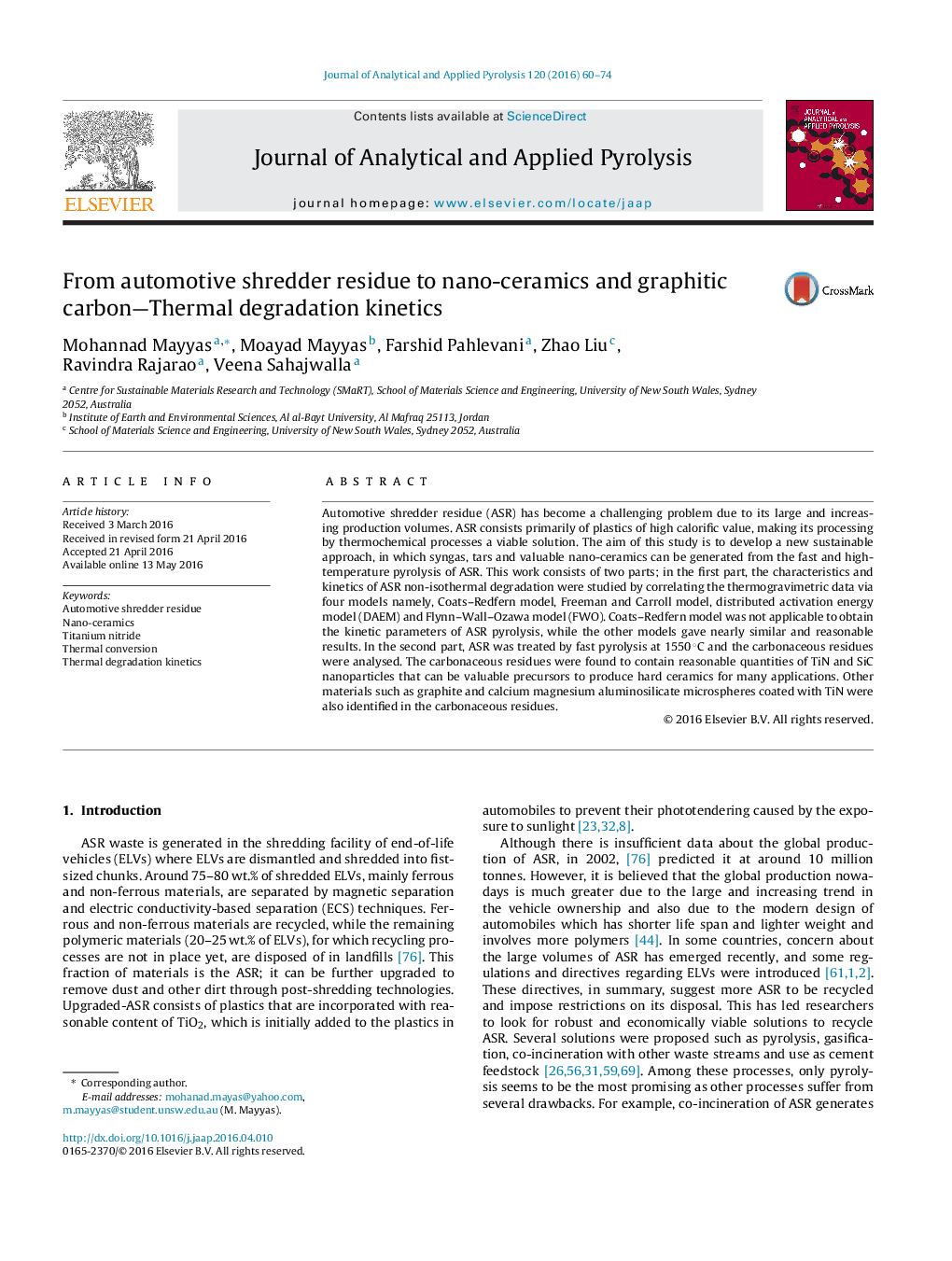| Article ID | Journal | Published Year | Pages | File Type |
|---|---|---|---|---|
| 1196529 | Journal of Analytical and Applied Pyrolysis | 2016 | 15 Pages |
•The thermal degradation kinetics of automotive shredder residue (ASR) were investigated.•Fast pyrolysis of ASR at 1550 °C was also studied.•The resulting char was found to comprise promising quantities of nano-ceramics.
Automotive shredder residue (ASR) has become a challenging problem due to its large and increasing production volumes. ASR consists primarily of plastics of high calorific value, making its processing by thermochemical processes a viable solution. The aim of this study is to develop a new sustainable approach, in which syngas, tars and valuable nano-ceramics can be generated from the fast and high-temperature pyrolysis of ASR. This work consists of two parts; in the first part, the characteristics and kinetics of ASR non-isothermal degradation were studied by correlating the thermogravimetric data via four models namely, Coats–Redfern model, Freeman and Carroll model, distributed activation energy model (DAEM) and Flynn–Wall–Ozawa model (FWO). Coats–Redfern model was not applicable to obtain the kinetic parameters of ASR pyrolysis, while the other models gave nearly similar and reasonable results. In the second part, ASR was treated by fast pyrolysis at 1550 °C and the carbonaceous residues were analysed. The carbonaceous residues were found to contain reasonable quantities of TiN and SiC nanoparticles that can be valuable precursors to produce hard ceramics for many applications. Other materials such as graphite and calcium magnesium aluminosilicate microspheres coated with TiN were also identified in the carbonaceous residues.
